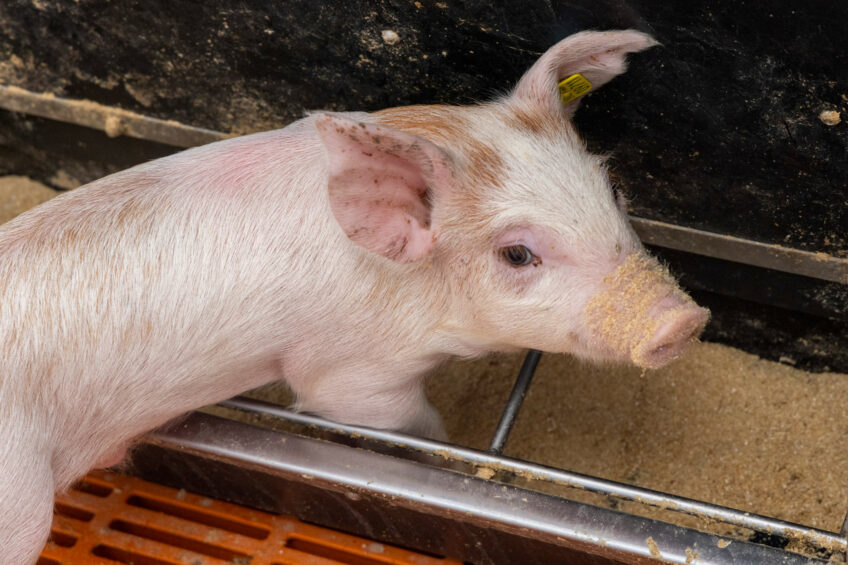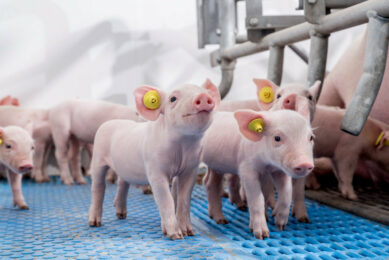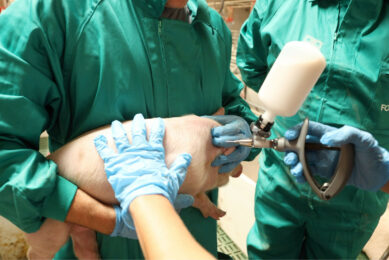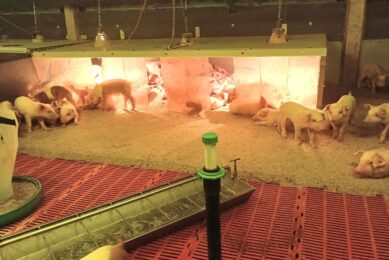Importance of manipulating feeding behaviour of modern piglets

Obviously, piglets having decent feed intake is welcomed on most farms. Over-eating, however, is not what producers wish to see as that could also have a counterproductive effect. So a decent feed intake is preferred, but in moderation and in balanced amount. How to get there? Pig nutrition expert Dr Francesc Molist shares his views.
New piglet genetics have increased feed intake capacity, which can sometimes result in sudden peaks of intake. In the absence of high doses of zinc oxide in the diet or drinking water, this irregular feeding pattern can lead to overeating. For example, during the first 2 weeks post-weaning, it may cause gut dysbiosis and diarrhoea.
Later, around 2-3 weeks post-weaning, it can be associated with the proliferation of Streptococcus suis, leading to meningitis.
Finding strategies to regulate feed intake
This growing concern highlights the importance of finding strategies to regulate piglet feed intake. The goal should be to promote a consistent intake pattern, avoiding spikes in consumption. One management approach used to reduce the risk of meningitis is feed restriction during the high-risk period (2-3 weeks post-weaning). However, implementing this strategy is challenging, especially in pens housing 20-30 piglets. Larger piglets tend to spend more time eating, which can increase body weight variability within the group.
To mitigate this issue, additional feeding pans may be required to ensure that smaller piglets have equal access to feed. Because this strategy is difficult to apply consistently, alternative solutions should be explored. Understanding which feed-related factors can influence intake behaviour is crucial.
If feeding pellets is preferred, it is important to identify pellet characteristics that influence intake patterns in modern piglets
Feed presentation
Feed presentation is one such factor. Diets offered in mash form tend to be consumed more gradually than pelleted diets. However, mash diets can be dusty and more prone to wastage, as piglets may play with the feed. If feeding pellets is preferred, it is important to identify pellet characteristics that influence intake patterns in modern piglets.
Past research has indicated that pellet hardness can significantly affect intake. Increased pellet hardness – caused by the addition of sugars (via Maillard reactions) or the use of micro-pellets – has been linked to reduced feed intake, though it remains unclear whether it also results in more gradual feeding. Similarly, the inclusion of large particles or ingredients that increase stomach viscosity, such as sugar beet pulp, has been associated with longer stomach retention and decreased intake. Again, whether this leads to more gradual feeding remains uncertain.
Major health challenges in post-weaning piglets
As S. suis and diarrhoea continue to pose major health challenges in post-weaning piglets, it becomes increasingly important to re-evaluate or develop new feeding strategies aimed at modifying piglet feeding behaviour.
This will involve not only advancements in feed processing but also the development of better methods to evaluate pellet characteristics – beyond traditional metrics such as particle size distribution and pellet durability.











